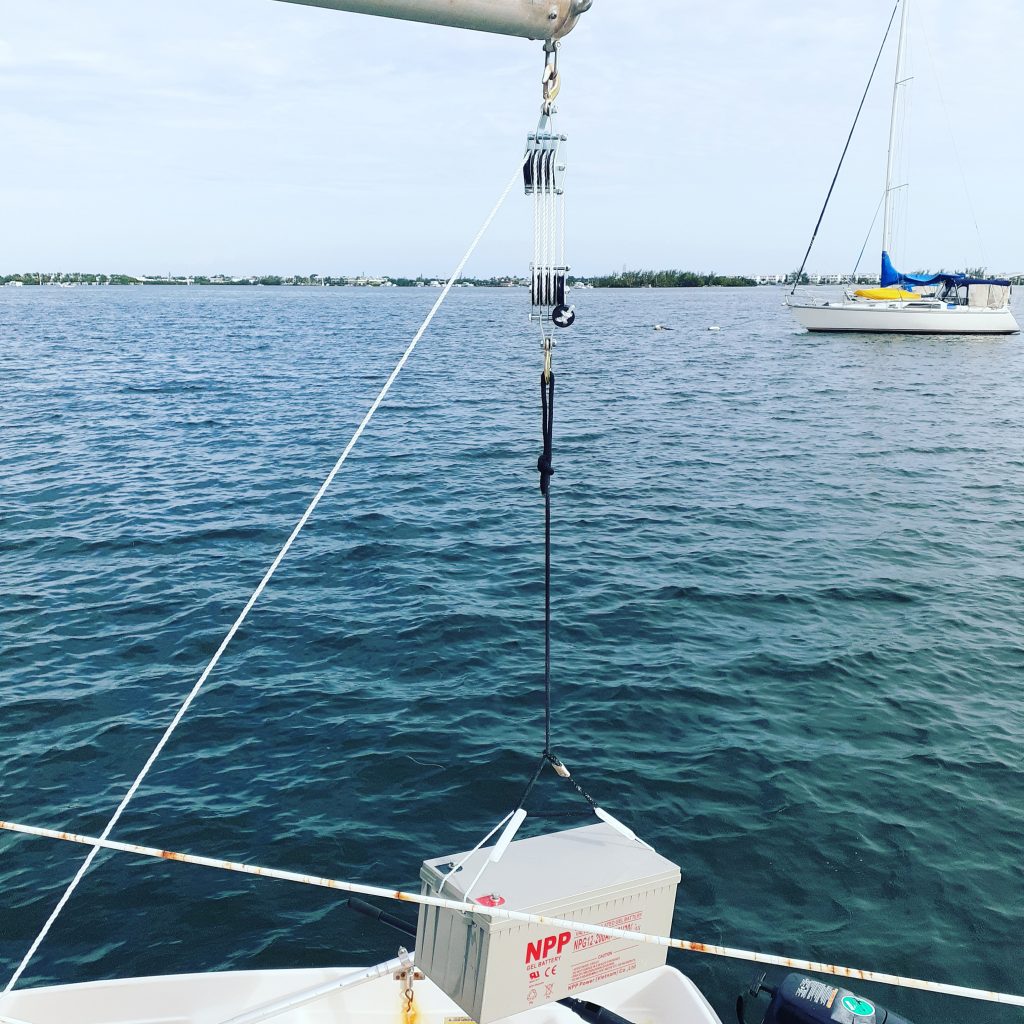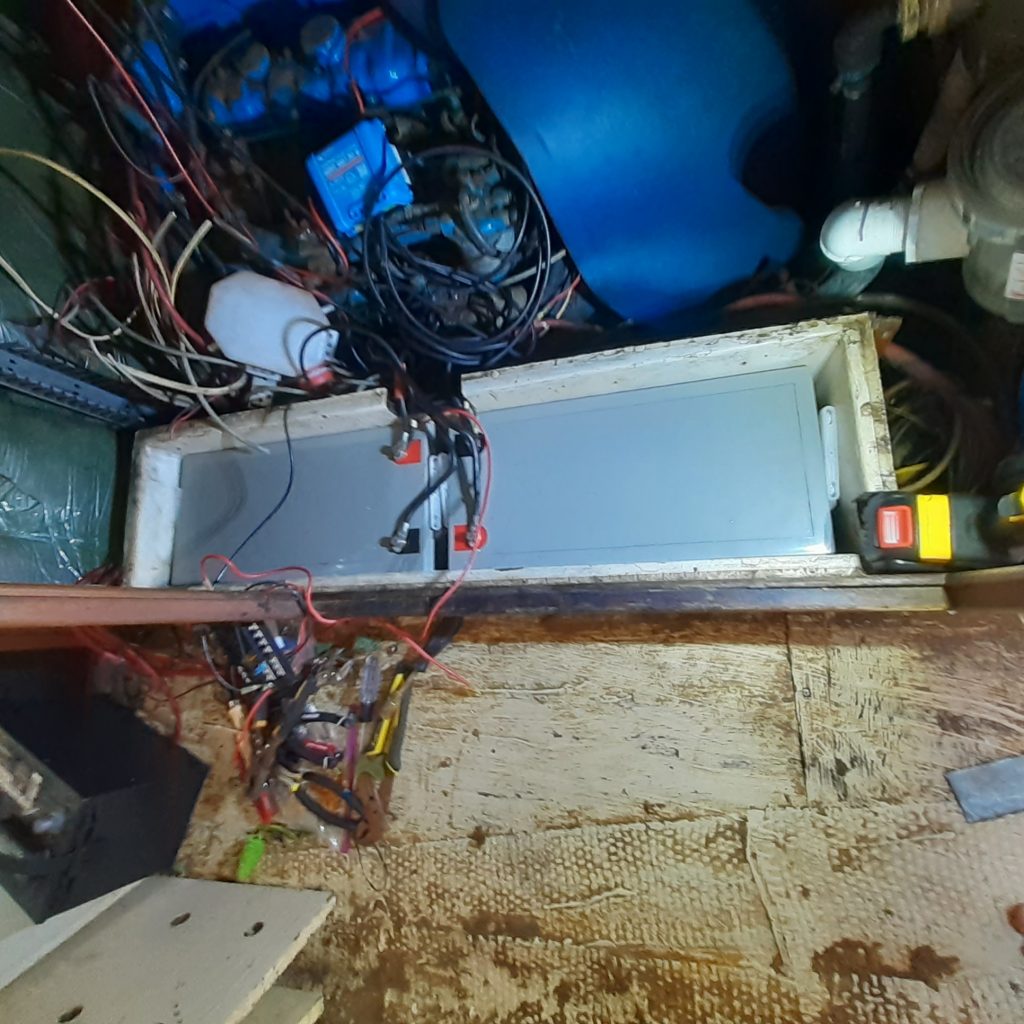As I’m in the process of pulling out all the core electrical wiring (everything before the distribution panel) and rewiring the engine room and new distribution panel I decided it was a good time to upgrade the core house bank batteries. I was in a little bit of a bind when leaving Jacksonville a couple years ago, both in time and budget respects. The house battery bank I had at the time was at it’s end life, and with a limited budget I just purchased 2 – 90AH batteries to get me on the “road”. But 180 AH limits what you can do (mostly I wanted the ability to power the new LED running lights and charge small electronic devices).

One of the challenges with flooded lead acid batteries is the fact that you need to maintain them. If not used they’ll discharge by themselves, and if left that way will have a short life span. With the addition of a small solar panel array I now had the ability to maintain a constant charge. As I’m horrible with maintenance I decided to pay the extra dollars and go with AGMs (200AH batteries are $400 ea).
Different Styles Of Batteries
For the purpose of operating an off-grid sailboat the biggest rating that you pay attention to is the number of amp-hours (AH) on your battery, this tells you how much usable energy you have available. If a refrigerator requires 8 amps to power the compressor and it runs a total of 4 hours a day (all those little 5 minute runs added together) then you use 32AH. With lead batteries you’re limited to using only 50% of your capacity (over discharge past the 50% damages the lead panels inside the battery). So, while I have 400AH of capacity I only have a usable 200AH. Luckily with a fridge, freezer and small electronics my usage is around 100AH per day.
How does a flooded lead acid battery work
Flooded lead acid batteries contain a liquid (electrolyte) that moves freely around the inside of the battery covering the lead plates. Wheen charged the electrolyte (battery acid) and the lead plates react to store electricty. Because of this free flowing liquid and the requirement that there needs to be caps over access points to add water. Charging the batteries raises the temperature of the battery which causes some of the water to be vented off. You need to top off the water on LFAs on a monthly bassis.
How does a AGM / Gel acid battery work
With AGM (Absorbent Glass Mat) batteries the battery acid is sealed witint the battery. The acid is suspended in thin fiberglass mats that are located between the lead plates. This allows them to be resistant to vibrations which means they work well in the boat environment.
Gel batteries have a thick paste like fluid that surrounds the lead plates. They are more costly than AGMs and also need a slower charge rate.
For me, the fact that they are maintenance free was the deciding factor. I’m horrible at monthly maintenance items.

Benefits and downside to a flooded lead acid battery
Benefits
- Low Cost
- Established technology
- Easy to source
Downside
- Monthly maintenance
- Installation requirements: Needs to be placed mostly level and vented so that offgassing doesn’t cause a danger.
- Slow rate of charge
Benefits and downside to a AGM / Gel battery
Benefits
- No maintenance
- Spill Proof / no venting
- As these are sealed the don’t need to be placed level and you don’t need to worry about offgassing.
- Deeper discharge than FLA
Downsides
- Cost (LFA + 33%)
- Harder to source

